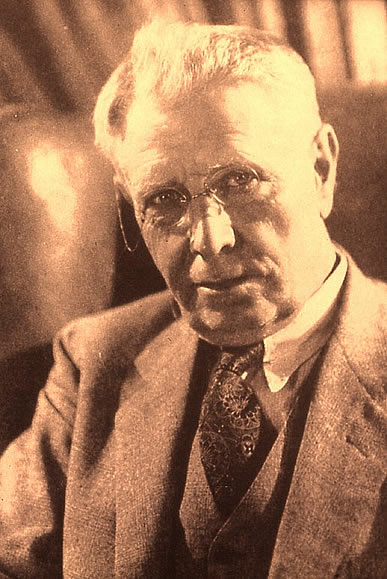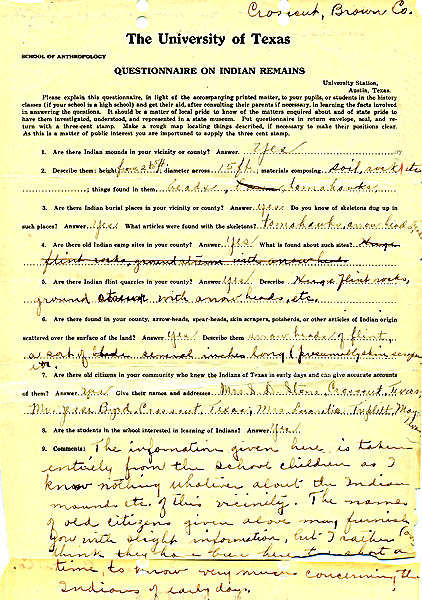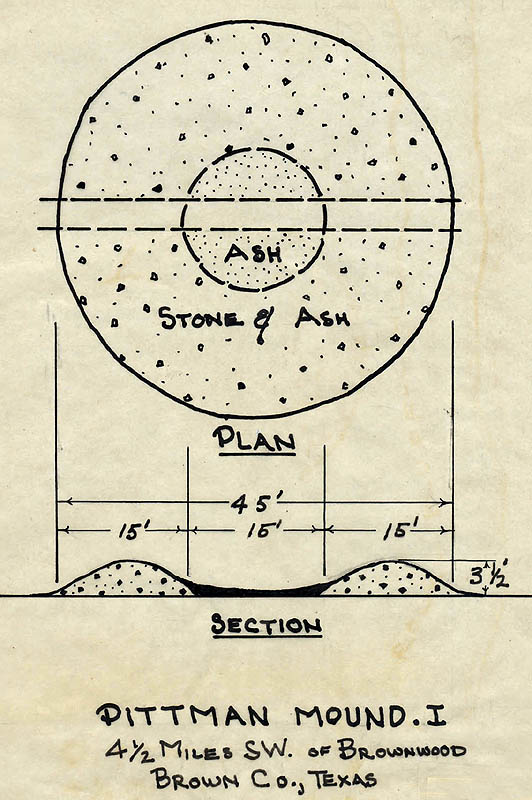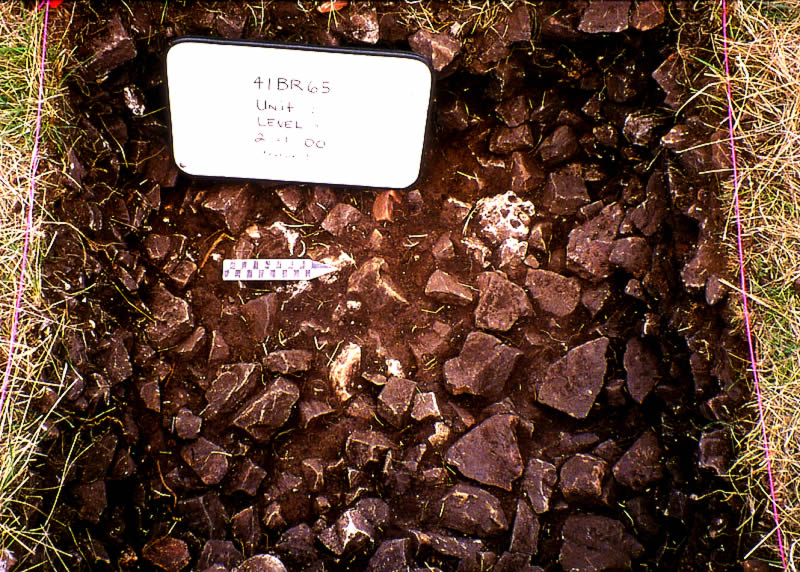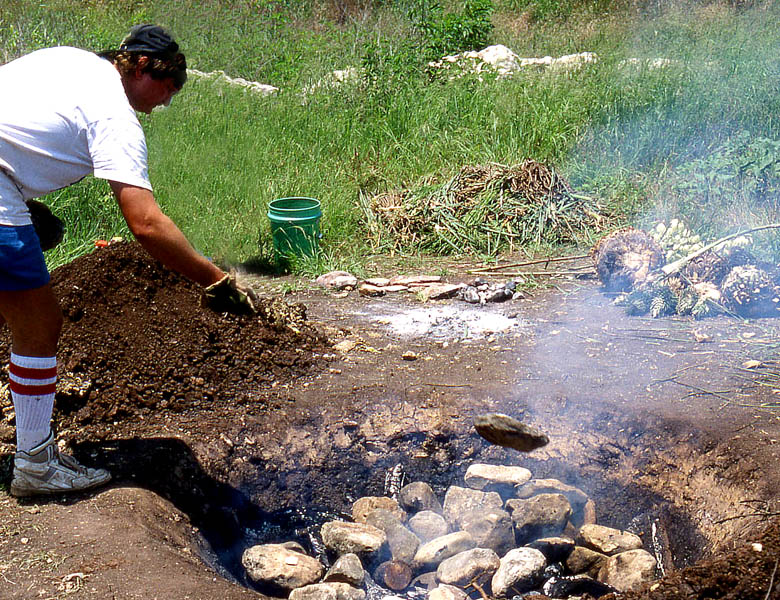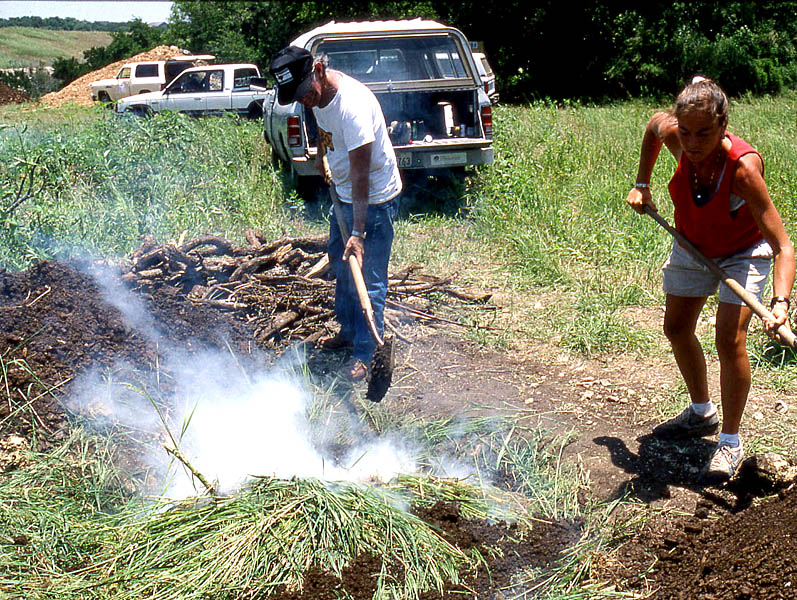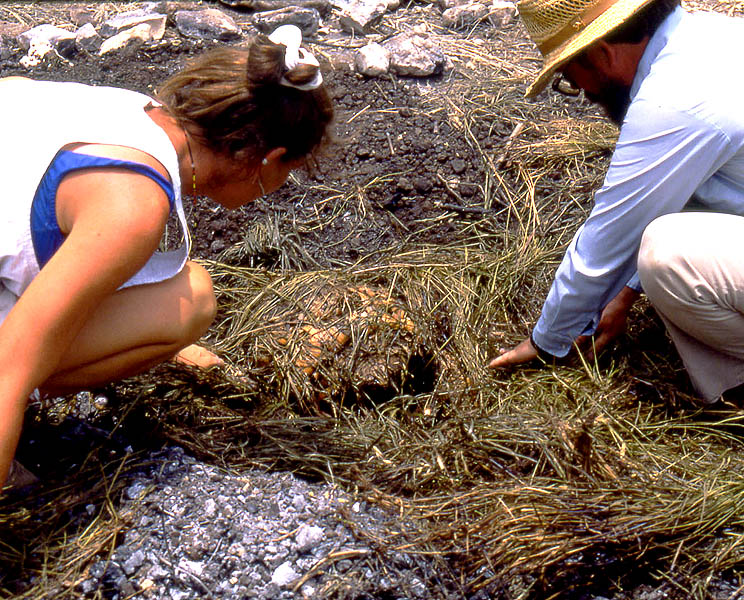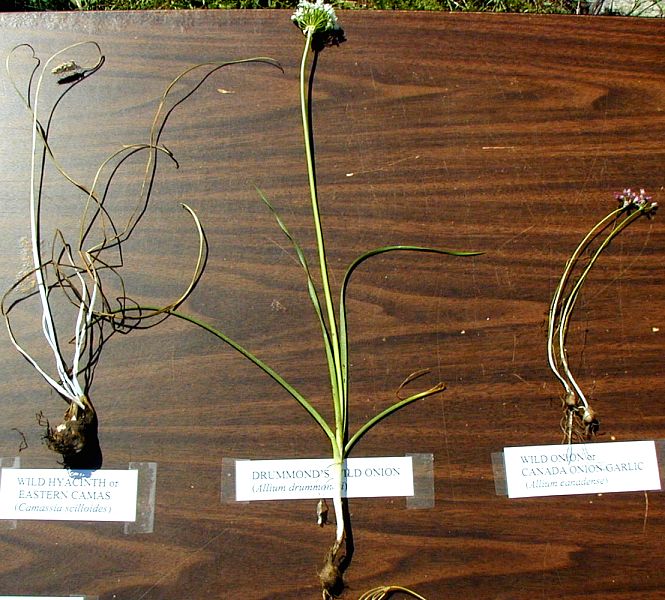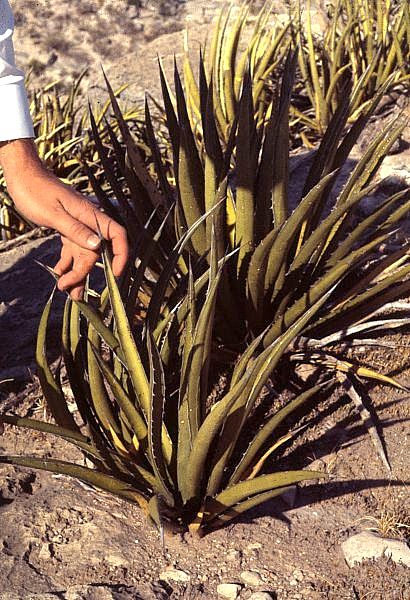|
|||||
| A typical burned rock midden is a low, donut-shaped mound of heat-fractured rocks and other cooking debris that accumulated over time from many plant-baking episodes that took place in a baking pit in the center of the midden. Thousands of years ago, prehistoric peoples learned that heated rocks can be used very effectively to bake certain plant foods, such as bulbs or fibrous plant "hearts," which must be cooked at least overnight and sometimes for several days before they are edible. Open fires, with or without rocks, lose their heat relatively quickly once the fuel is consumed. In contrast, rocks heated within a pit and covered by layers of plants and insulating earth, can hold heat for up to 48 hours. The larger and more numerous the rocks, the more slowly they will dissipate heat and the longer they will stay hot enough to cook the food. This technology is called earth oven cooking or pit baking and it was known throughout most of the ancient world. Burned rock middens are common across central and southwestern Texas and were first recognized as cooking features by archeologists in the early part of the twentieth century. The first systematic investigation of these rock middens was begun by by James E. Pearce at the University of Texas around 1917. Pearce called these features "kitchen middens" and thought they were the result of numerous fires built within circles of stone to keep the fire contained for cooking and warmth. Others, he believed, could be attributed to "stone boiling," a procedure in which heated stones were placed into a vessel containing water and food in order to cook the food. Later archeologists proposed various alternative ideas or models of how middens formed. The first of these,—the intersecting hearth model,—was described by J. Charles Kelley and Thomas Campbell in 1942. They believed that piles of burned rock gradually accumulated as numerous small cooking hearths were built in the same general area; over time, the broken rocks from all of the hearths formed a burned rock midden. In contrast, in the late 1960s William Sorrow proposed a communal dump model. In this scenario, burned rock middens are the result of prehistoric people dumping used rock in a central discard heap—the actual cooking taking place in hearths scattered across the larger campsite. Over time, as people returned to the same campsite was reused and enough burned rock was discarded in the same place, a mound would be formed. Anatomy of a Midden: The Central Feature or Earth Oven ModelToday, the prevailing notion is the central feature or earth oven model proposed by TBH editor Steve Black and his colleagues at the Texas Archeological Research Laboratory in the mid-1990s. This explanation partially builds on several of the earlier ideas in Central Texas, as well as ethnohistoric accounts of the use of similar features by native peoples throughout the Southwestern United States. Pearce correctly realized that the cooking was taking place in the central area of the middens, but he didn't understand hot rock cooking. Sorrow was right about middens representing mainly dumps, but he failed to recognize that the source of the rock was from within the midden itself. The two most important new insights are: (1) the realization that most middens formed around a central feature or baking pit; and (2) a pragmatic understanding of earth oven cooking, the only plausible process that could result in so many mounds of spent cooking stones. While many kinds of plant and animal foods can be baked in earth ovens, it is a labor-intensive and resource-intensive cooking method that is mainly used to cook certain kinds of plants. Before considering what, exactly, was being cooked in earth ovens, it is helpful to understand how they work. For a small earth oven, the first step is digging a pit, usually a shallow pit a foot or so deep and 1-1.5 meters (3-5 feet) across. Within this pit—called an oven pit or baking pit—a blazing wood fire is built, upon which large rocks are heaped. As the fire burns down, the rocks become very hot—sometimes even glowing hot. Using a long fire pole, the cook arranges the hot rocks into a circular bed with a flat or concave upper surface. This hot rock bed will function as a heating element or thermal storage device that holds and slowly releases heat. As soon as the heating element is ready, it is quickly covered with a thick layer of green plant material such as wet grass or prickly pear pads. This lower layer of packing material serves two purposes: it keeps the food from direct contact with the rocks and coals and, most importantly, it releases steam. The food layer is added next and covered with an upper layer of packing material that adds more moisture and keeps the food clean. The final addition is an earthen cap—a thick layer of earth holds the steamy heat within the oven. A properly constructed earth oven will stay hot for many hours—up to 48 hours in some cases. The cooking time varies depending on what and how much is being cooked. After the desired cooking time is up, the earthen cap, upper packing material, and the food layers are removed, leaving the bottom layers undisturbed. Days, weeks, or even years later, prehistoric cooks often returned to reuse an existing oven pit—reusing an old pit is much easier than digging a new one. Before they could build a new oven, they first had to clean out the pit and dismantle the old heating element. As they did this, they sorted through the rocks at the bottom of the pit. Any large rocks that remain more or less intact were put to one side to be reused. The many fist-sized fragments broken by thermal cycling (heating and cooling) were tossed out of the pit, forming a debris ring or mound around the pit. The more the pit was used, the larger the ring or "midden" of broken rock became. The below drawings show how the process works, step-by-step. |
|||||

|
|||||
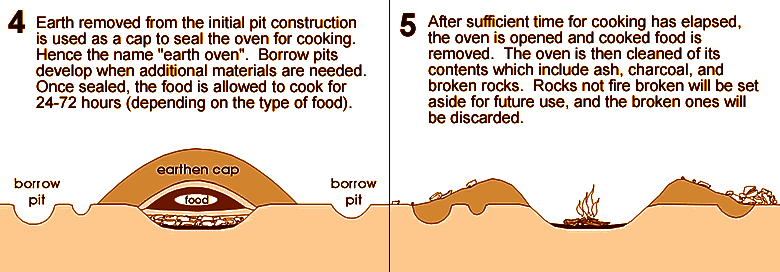
|
|||||
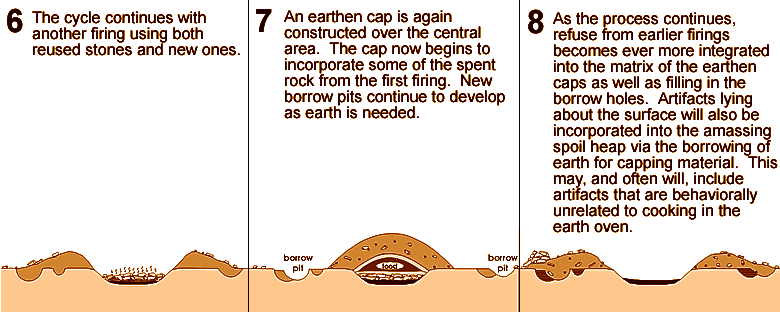
|
|||||
|
|||||

